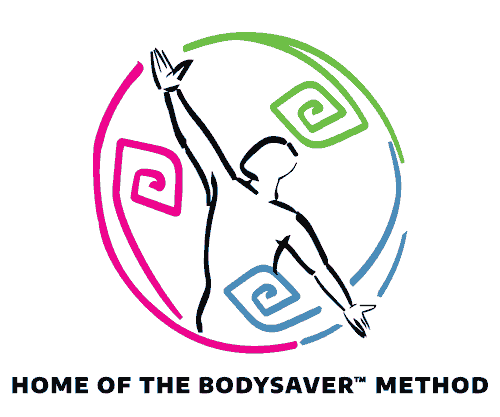Principles of Longevity
The Principles of Longevity are practices that we’ve developed through years of experience giving and teaching massage. These Principles, taken together with the Power Tool-based movements from the BodySaver courses, are what will allow you to have a longer career doing what you love: practicing massage. What’s listed below is a sampling of just a few of the Principles, to give you a better understanding of what we do. By applying these Principles, you are going to see immediate improvement in your massage practice. You’ll be able to give longer sessions, more effectively, with less pain. To get started using the Principles of Longevity in your practice, try one of our live courses!
Please Be Seated
Performing massage while seated is an extremely effective way to take the strain off of your lower body joints, including hips, low back, knees, and sacroiliac. The support of using a seat creates stability and the height needed to deliver effective pressure during a massage session. The positioning of being seated eliminates the “hinging” that happens in the low back (especially L4/L5) when you are bending over your client as they lay on the table. You can use your whole body to deliver massage when you are seated—it’s like having an extra set of hands!
Floor Your Clients
Most people have more strength in their lower body than in their upper body, but we deliver massage mostly with our upper body—it’s like trying to walk on your hands! What if you were to work with your client on the floor without being on the floor yourself? This creates effortless use of your legs and feet, where you can take advantage of gravity and body weight, as well as the unique tools of your foot. You can work on your clients while they are in any position on the floor—prone, side-lying, supine, seated, and even Child’s Pose.
Rock Your Body
Rocking is a soothing motion that creates a biological relaxation response for both you and your client, via your parasympathetic nervous system. When a rocking motion is utilized with proper ergonomics and postural alignment, the pressure is taken off the therapist and delivered to the client—where it should be. Rocking creates economy of motion and energy as you use momentum instead of muscular strength. None of your joints get locked into place, and no muscle gets contracted for any period of time. Less energy is expended, but your massage is more effective.
Supersize Your Table
We’ve all been there: your client is in supine position, arm extended, and you’re trying to massage that arm and support it at the same time, leaving only one hand free to give the massage. It turns you into a one-handed massage therapist, limiting your effectiveness, as any pressure you generate has to be counter-forced by the opposite hand. Having a table extension where your client can rest their arm or leg not only frees up both hands to work, but allows you to reposition yourself at different angles to access your client’s body. The extension must be at the same height as the table, and padded for comfort.

